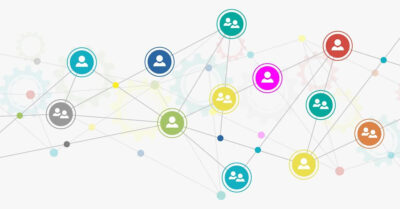Table of Contents
Attribution in healthcare marketing is one of the most effective methods for improving your marketing return on investment (ROI) as a healthcare provider. According to a 2024 healthcare marketing report by Madavi Agency, 77% of people start their patient journey using search engines, providing healthcare organizations with the opportunity to tap into the market and get good returns.

Attribution marketing provides a way for measuring the effectiveness of your marketing campaigns and determining which channels are driving the most conversions. While attribution marketing is not a new concept, it is becoming increasingly important in the healthcare industry.
With the rise of digital marketing and the increasing amount of data available, healthcare providers can now measure the effectiveness of their marketing campaigns more accurately than ever before. By using attribution marketing, you can gain insights into which channels are driving the most conversions and adjust your marketing strategy accordingly.
The importance of attribution marketing in healthcare cannot be overstated. With the increasing competition in the industry, providers need to ensure that their marketing efforts are effective in attracting and retaining patients. Attribution marketing provides a way to measure the effectiveness of these efforts and make data-driven decisions to improve them.
Types of Attribution Models
There are several types of attribution models that healthcare providers can use to measure the effectiveness of their marketing campaigns. These include:
- First-Touch Attribution: This model attributes all the credit for a conversion to the first touchpoint that a patient has with a healthcare provider.
- Last-Touch Attribution: This model attributes all the credit for a conversion to the last touchpoint that a patient has with a healthcare provider.
- Multi-Touch Attribution: This model attributes credit for a conversion to all the touchpoints that a patient has with a healthcare provider.

Each of these models has its strengths and weaknesses, and healthcare providers need to choose the one that best suits their needs.
Challenges in Attribution
While attribution marketing is a powerful tool, it is not without its challenges. One of the biggest challenges is the complexity of the healthcare industry. With multiple touchpoints and multiple stakeholders involved in patient care, it can be difficult to accurately attribute credit for a conversion to a single touchpoint.
Another challenge is the lack of standardization in the healthcare industry. With different providers using different systems and processes, it can be difficult to compare the effectiveness of marketing campaigns across different providers.
Attribution in Healthcare Marketing
As healthcare marketing becomes more competitive, it’s important to understand how attribution can help you optimize your efforts and maximize your ROI. A significant process in attribution is measuring the effects of marketing efforts and the rate at which they convert consumers to achieve desired consumer outcomes. In healthcare, attribution is especially important because of the unique aspects of the industry and the compliance and regulations that must be followed.
Unique Aspects of Healthcare
Healthcare marketing differs from other industries in several ways. First, healthcare is a highly regulated industry, and marketing efforts must comply with various laws and regulations. Second, healthcare is a personal and sensitive topic, and marketing efforts must be sensitive to this. Finally, healthcare consumers are often in a vulnerable position, and marketing efforts must be ethical and transparent.

Compliance and Regulations
Compliance and regulations are a major consideration in healthcare marketing. HIPAA regulations, for example, require that healthcare data be anonymized, but that does not preclude it from being measured. Common marketing-attribution methods that meet the industry’s criteria for healthcare consumer data include:
- Multi-touch attribution
- Algorithmic attribution
- Time decay attribution
By using these methods, healthcare marketers can gain valuable insights into the effectiveness of their marketing efforts while remaining compliant with regulations.
Data Collection and Management
When implementing attribution marketing in healthcare, data collection and management is a crucial aspect of the process. It involves collecting and analyzing data from various sources to identify patterns and trends that can help optimize your marketing strategies. Here are some key considerations when it comes to data collection and management in healthcare:
Data Sources
The first step in data collection is identifying the sources of data. In healthcare, data can come from a variety of sources, including electronic health records (EHRs), claims data, patient surveys, and social media. Each of these sources provides a unique perspective on patient behavior and preferences, and combining them can provide a more comprehensive view of your target audience.
Data Integration
Once you have identified your data sources, the next step is integrating them into a single, unified dataset. This can be a complex process, as different data sources may use different formats or standards. However, integrating your data is essential for gaining a holistic view of your patients and their healthcare journeys.

One way to integrate your data is through the use of data warehouses or data lakes. These platforms allow you to store and analyze large amounts of data from multiple sources, providing a centralized repository for your data.
Data Privacy
Finally, it’s important to consider data privacy when collecting and managing healthcare data. The Health Insurance Portability and Accountability Act (HIPAA) sets strict guidelines for the collection, use, and disclosure of patient health information. This includes requirements for obtaining patient consent, ensuring data security, and implementing appropriate safeguards to protect patient privacy.
To ensure compliance with HIPAA regulations, it’s important to work with a team of healthcare data experts who have experience in data privacy and security. They can help you navigate the complex regulatory landscape and ensure that your data collection and management practices are in line with industry standards.
When you carefully manage your data collection and management processes, you can gain valuable insights into patient behavior and preferences, and optimize your healthcare marketing strategies for improved patient outcomes.
Technologies for Attribution in Healthcare Marketing
In today’s digital age, attribution marketing in healthcare heavily relies on technology. With the help of various software and tools, healthcare providers can track and analyze their marketing efforts and determine their impact on patient acquisition and retention.

Attribution Software
Attribution software is a critical component of attribution marketing in healthcare. It allows healthcare providers to track and analyze the effectiveness of their marketing campaigns across various channels, such as social media, email, and paid search. This software helps to identify which channels are driving the most traffic, leads, and conversions, enabling healthcare providers to optimize their marketing efforts and allocate their resources more effectively.
One popular attribution software used in healthcare is Google Analytics. It is a free tool that provides healthcare providers with insights into their website traffic, including where their visitors are coming from, what pages they are visiting, and how long they are staying on the site. Google Analytics also enables healthcare providers to track the effectiveness of their marketing campaigns and measure their return on investment.
Analytics and Reporting Tools
Analytics and reporting tools are essential for healthcare providers to gain insights into their marketing efforts. These tools help healthcare providers to track and analyze their marketing campaigns, identify trends, and make data-driven decisions.
One popular analytics and reporting tool used in healthcare is Tableau. It enables healthcare providers to visualize their data and gain insights into their marketing efforts. Tableau allows healthcare providers to create interactive dashboards and reports, making it easy to share insights with stakeholders.

Another popular analytics and reporting tool used in healthcare is HubSpot. It is an all-in-one marketing platform that provides healthcare providers with a range of tools to manage their marketing campaigns, including email marketing, social media, and search engine optimization (SEO). HubSpot also provides healthcare providers with analytics and reporting tools, enabling them to track the effectiveness of their marketing campaigns and make data-driven decisions.
In summary, attribution marketing in healthcare relies heavily on technology. Attribution software and analytics and reporting tools enable healthcare providers to track and analyze their marketing efforts, identify trends, and make data-driven decisions. When you leverage these tools, you can optimize your marketing efforts and improve patient acquisition and retention.
Implementing Attribution in Healthcare Marketing
By tracking all patient touchpoints in the marketing journey, healthcare providers can gain a more holistic view of their patients and adapt their marketing plan to their customer’s needs. Attribution in healthcare marketing plays a fundamental role in this process.
Strategy Development
To implement attribution marketing in healthcare, it is important to start with a clear strategy. This involves identifying the key metrics that will be used to measure the success of the marketing campaign, as well as the target audience and the channels that will be used to reach them.
One effective strategy is to use a multi-touch attribution model, which takes into account all of the touchpoints that a patient has with the healthcare organization. This allows providers to see the full picture of a patient’s journey and identify the most effective channels for reaching them.

Execution and Optimization
Once the strategy has been developed, it is time to execute the marketing campaign and track the results. This involves implementing tracking codes and other tools to measure the effectiveness of each touchpoint, as well as analyzing the data to identify areas for improvement.
Optimization is an ongoing process that involves making adjustments to the marketing campaign based on the data. This may involve tweaking the messaging, adjusting the channels used, or changing the timing of the campaign to better reach the target audience.
Case Studies and Best Practices
Successful Campaigns
Attribution marketing is a vital aspect of healthcare marketing that can help healthcare providers to create, communicate, and provide value to their target market. Successful healthcare marketing campaigns require a thoughtful integration of the best available scientific knowledge with clinical expertise. Here are some successful healthcare marketing campaigns that demonstrate the importance of attribution marketing:
- St. Jude Children’s Research Hospital: St. Jude Children’s Research Hospital used attribution marketing to increase its donations and raise awareness about childhood cancer. The hospital used a multi-channel marketing approach that included social media, email marketing, and direct mail. The hospital was able to increase its donations by 15% and raise awareness about childhood cancer by 25%.
- Cleveland Clinic: Cleveland Clinic used attribution marketing to increase its patient volume and improve patient satisfaction. The hospital used a multi-channel marketing approach that included social media, email marketing, and direct mail. The hospital was able to increase its patient volume by 20% and improve patient satisfaction by 25%.
- Mayo Clinic: Mayo Clinic used attribution marketing to increase its online engagement and improve patient satisfaction. The hospital used a multi-channel marketing approach that included social media, email marketing, and direct mail. The hospital was able to increase its online engagement by 35% and improve patient satisfaction by 20%.
Key Takeaways
While attribution marketing can be a powerful tool for healthcare providers, it is important to keep in mind some lessons learned from successful campaigns:

- Understand your target audience: Healthcare providers should understand their target audience and tailor their marketing campaigns to meet their needs. Understanding your target audience can help you to create more effective marketing messages and increase engagement.
- Use a multi-channel approach: Healthcare providers should use a multi-channel approach to reach their target audience. Using a combination of social media, email marketing, and direct mail can help to increase engagement and improve patient satisfaction.
- Measure your results: Healthcare providers should measure the results of their marketing campaigns to determine their effectiveness. Measuring your results can help you to identify areas for improvement and make adjustments to your marketing strategy.
Future of Attribution in Healthcare Marketing
As healthcare continues to evolve, so does the role of attribution marketing. Here are some emerging trends and predictive analytics that are shaping the future of attribution in healthcare.
Emerging Trends
One of the most significant emerging trends in attribution marketing is the use of machine learning and artificial intelligence. With the vast amount of data available in healthcare, these technologies can help identify patterns and predict outcomes. This can help healthcare providers better understand patient behavior and tailor their marketing efforts accordingly.
Another trend is the integration of social determinants of health (SDOH) data into attribution models. SDOH data includes factors such as income, education, and access to healthcare. By incorporating this data into attribution models, healthcare providers can gain a more comprehensive understanding of their patients and develop more effective marketing strategies.
Predictive Analytics
Predictive analytics is a powerful tool that can help healthcare providers anticipate patient behavior and develop more effective marketing strategies. By analyzing patient data, predictive analytics can help healthcare providers identify patients who are at risk of developing certain conditions, such as diabetes or heart disease. This can help providers develop targeted marketing campaigns aimed at preventing these conditions.

Another way predictive analytics can be used is to identify patients who are likely to be non-compliant with their treatment plans. By identifying these patients early on, healthcare providers can develop strategies to improve compliance and prevent complications.
In conclusion, the future of attribution in healthcare marketing is exciting and full of potential. By implementing current practices and leveraging emerging trends, you can gain a deeper understanding of your patients and develop more effective marketing strategies.







